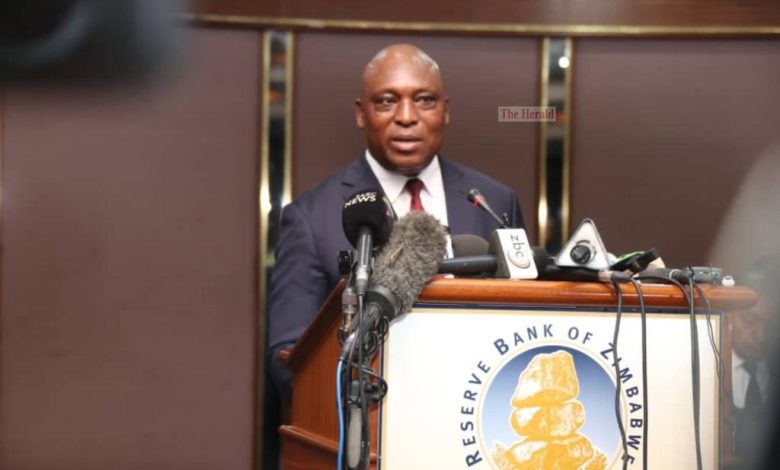RBZ’s US$50m injection cools parallel market: Dr Mushayavanhu
The Reserve Bank of Zimbabwe (RBZ)’s injection of US$50 million into the interbank foreign exchange market recently, has “managed to mop up substantial liquidity in the market,” resulting in a noticeable cool down of parallel market rates that plummeted from about ZiG 25 per dollar to between ZiG 19.50 and 21.
This stabilisation marks a significant shift from the turbulent fluctuations experienced over the past three weeks, offering a reprieve to businesses and consumers alike.
On July 26, 2024, the RBZ identified a build-up in pipeline demand for foreign currency at banks, which had been exerting undue pressure on the foreign exchange market. This prompted the central bank to inject US$50 million to mitigate the rising tension.
Dr Mushayavanhu yesterday told Business Weekly that the recent injection of the US$50 million into the interbank foreign exchange market managed to mitigate pressure for foreign currency, adding the apex bank will continue monitoring the situation.
“The decline in the parallel market rate suggests that the RBZ’s intervention was effective as the US$50 million managed to mop up substantial liquidity in the market. This has also helped to moderate pipeline demand for foreign currency and pressure on the exchange rate.
“The RBZ also continues to undertake robust liquidity management to ensure optimal levels of money supply consistent with inflation and exchange rate objectives,” the Governor said.
In terms of complementary fiscal measures announced in the mid-term fiscal policy review statement, particularly requirements for QPDs to be 50 percent in ZiG, the Governor added; “They have boosted confidence in the local currency. Companies have therefore reduced the quick disposal of ZiG since they now have a home for it in the form of settlement of Government services and taxes. This has boosted confidence in the foreign exchange market.”
In terms of complementary fiscal measures announced in the mid-term fiscal policy review statement, particularly requirements for QPDs to be 50 percent in ZiG, the Governor added that, “They have boosted confidence in the local currency. Companies have therefore reduced the quick disposal of ZiG since they now have a home for it in the form of settlement of government services and taxes. This has boosted confidence in the foreign exchange market.”
In his statement recently, Dr Mushayavanhu emphasised the central bank’s commitment to maintaining market stability through targeted interventions.
“Since our involvement in the interbank market, we have successfully supplemented the supply of foreign currency by authorised dealers to meet the increasing demand from economic agents,” he stated.
The extended lead time to convert working capital through formal channels was further compromising the production value chain, exacerbating operational inefficiencies. The RBZ’s timely intervention was welcomed as a crucial relief measure.
The Bankers Association of Zimbabwe (BAZ) acknowledged that the US$50 million injection largely met the existing market demand. However, BAZ president, Lawrence Nyazema, expressed concerns over the potential impact of increased Zimbabwean dollar (ZiG) sales on forex availability.
Nyazema highlighted the interconnectedness of local currency sales and foreign currency demand, noting that businesses relying on ZiG will inevitably experience foreign currency shortages for importing raw materials and restocking.
“The majority of importers have been using their own foreign currency from exports, local sales, and diaspora inflows,” Nyazema said.
“As ZiG sales increase, we expect demand for interbank foreign currency to follow suit. For now, the US$50 million should largely meet most of the demand for those with cross-border payments and have ZiG balances to pay for the forex.”
Economist, Dr. Prosper Chitambara, provided a pronounced perspective on the situation, emphasising the delicate balance required to sustain this newfound stability.
“While the injection has brought immediate relief, it is essential for the RBZ to monitor the market closely and be prepared for further interventions if necessary. The parallel market rates are a reflection of underlying economic conditions, and addressing those fundamentals is key to long-term stability,” he said.
Dr Chitambara also pointed out the broader implications of the forex injection on the economy, “A stable exchange rate is crucial for economic planning and investment. Businesses need predictability to make informed decisions and this intervention by the RBZ provides a semblance of that stability. However, ongoing reforms and structural adjustments are necessary to sustain this progress.”
Tinevimbo Shava, another economist, echoed the same sentiments, highlighting the importance of continued policy support and strategic interventions.
“The RBZ’s action is commendable, but it must be part of a larger, coherent economic strategy. Ensuring adequate forex liquidity in the market will require sustained efforts and collaboration between the central bank, Government and private sector,” he said.
Shava also stressed the significance of restoring confidence in the local currency. “For the ZiG to gain broader acceptance and reduce pressure on the forex market, there must be trust in its value and stability. This requires consistent policy measures, fiscal discipline and transparent communication from the authorities.”
Looking ahead, the RBZ’s challenge will be to maintain this stability while addressing the structural issues that contribute to the volatility of the foreign exchange market. The central bank’s capacity to respond swiftly and effectively to market dynamics will be crucial in preventing future disruptions.-ebsinessweekl









